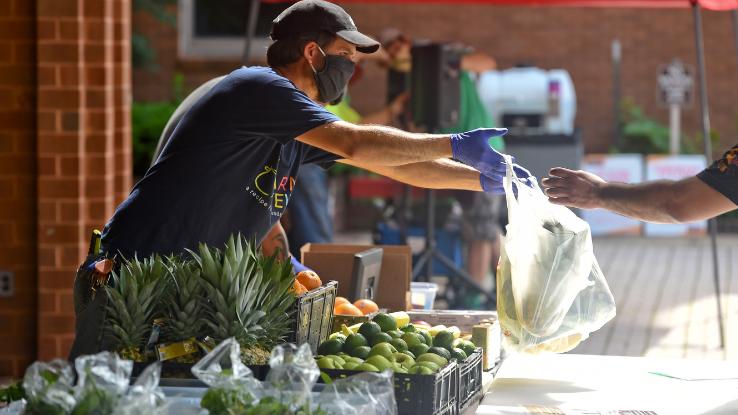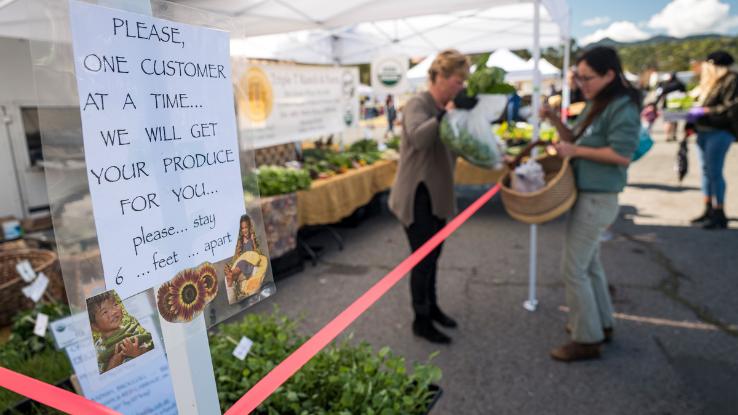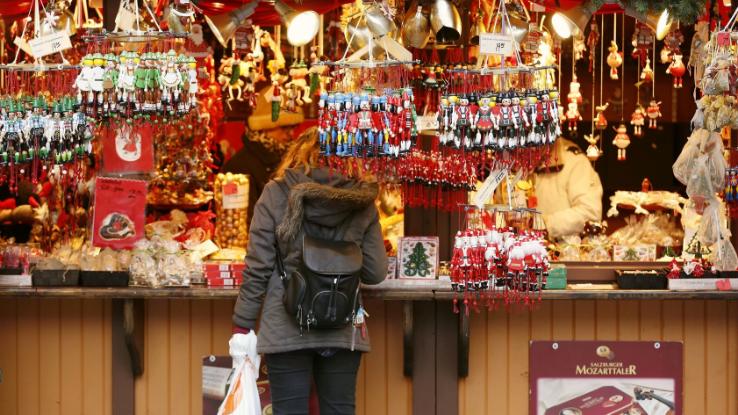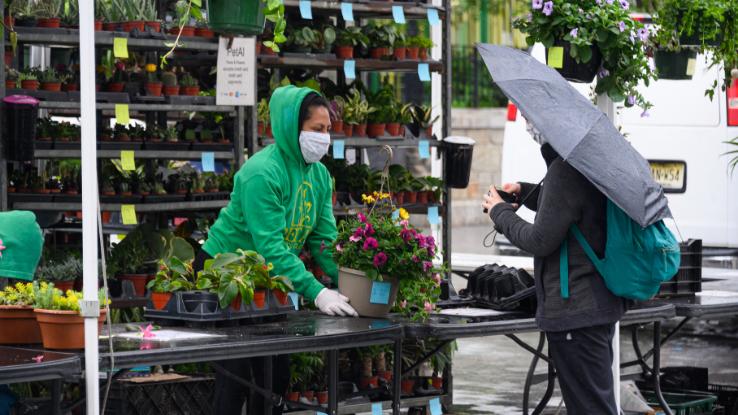
Few industries were spared from COVID-19’s wrath. 2020 was a difficult year for many people, including local food growers. The crisis affected how farmers markets were run and the way people shopped at them. Many were left wondering what farmers markets were going to do to keep everyone safe and healthy. By now, you may have been vaccinated and are ready to support food growers and local farmers markets. Learn here what changes farmers markets have made and even how some food growers were able to thrive amidst a global pandemic.
The Farmers Market Experience Is Drastically Different Due to COVID-19
Many farmers markets worked to keep shoppers and staff safe by following CDC guidelines. For this reason, handwashing booths, face masks, social distancing requirements and limits on the number of shoppers have become the new normal.

Farmers markets made new policies to prevent cross-contamination risks. Sampling food and self-picking produce were off-limits to customers, unfortunately. Normally a farmers market staple, it makes people feel safer knowing that farmers are the only ones touching the produce. Some vendors hired more staff to provide extra support and services, which include enforcing social distancing, helping shoppers find items and reducing lines’ wait times.
Prepared food sales were no longer allowed at many farmers markets. As a result, some vendors sold prepackaged food as a safety precaution. Los Angeles Public Health officials explained the issue with serving food in this manner, noting, “Prepared food sales are not [allowed] because individuals tend to buy their food and then eat it while walking around the farmers market — doing so without a face covering.”
Before those changes, the CDC stated, “Outdoor farmers markets provide a lower risk shopping option with immediate and lasting benefits for shoppers and the community at-large.” The risk of COVID-19 spreading via the food and its packaging is very low. Enforcing social distancing guidelines were important. Wearing masks and staying at least 6 feet apart to prevent the spread of the virus was imperative to stopping the spread. The public health policies farmers markets have adopted aimed to do more to help lower the risk of transmission.
How Colder Weather and COVID-19 Are Changing Farmers Markets
As temperatures dropped in 2020’s fall and winter, some vendors faced new struggles and questions. For instance, Iowa City extended its farmers market season through December to serve and protect shoppers outdoors. Similarly, the Glens Falls Farmers Market headed indoors. Regarding this change, a farmers market staff news release said, “In the interest of keeping our customers safe, we sought out a large venue for social distancing purposes.” Based on CDC guidelines, social distancing and wearing face masks have been essential in lowering transmission risks, and it’s important that farmers markets in all facilities continue to enforce these precautions.

Holiday markets were also different, with some fairs adapting to public health orders. In Minnesota, Excelsior’s holiday fair Christkindlsmarkt (short for Christmas market) required reservations, face coverings and social distancing — practices that help reduce viral spread. In Chicago, Christkindlmarket became a virtual affair. The market helped shoppers buy seasonal candles, keepsake mugs and other holiday favorites online in the safety of their own homes.
Has the Pandemic Caused Farmers Markets to Struggle?
TThe COVID-19 outbreak negatively impacted many farmers. Due to the fear of spreading the virus, some vendors stopped returning to farmers markets. For instance, the number of vendors at the Santa Monica Farmers Market dropped from around 80 to fewer than 60. Some markets that remained open have experienced fewer sales. Rose Rennie, the owner of Energy Bee Farm, “estimates that her business dropped 30% over the summer.”

Many vendors have struggled to reach normal, pre-COVID numbers, but some have made a sufficient number of sales. In Roseville, Erik Powell of Produce Alive saw his sales increase by as much as 40%. Meanwhile, Tom Broz sometimes has a waiting list of customers for his fresh produce at Live Earth Farm. At Shirley’s Farmers Market, Rodriguez Farms sold 92 cases of strawberries one morning, while Freshway Fish sold 30 pounds of smoked salmon in less than two hours.
Farmers markets have adjusted to many changes due to the pandemic One of their top priorities has been to protect vendors, staff and visitors, but it’ll be equally important to follow any new guidelines to maintain safety and keep businesses running.
If you plan to visit a farmers market soon, it’s still good to keep an abundance of caution. With COVID variants and germs in general, it’s good to do what you can to help your community, especially at farmer’s markets that are so focused on human interaction. Here’s what you can do to minimize risks of catching or spreading anything. :
Avoid touching produce and other items. Ask an employee for help.
Wash your hands before and after visiting the market.
Wear a face covering at all times.
Stay at least 6 feet away from others.
If you feel sick, stay home and rest.
Wash produce before eating
When washing produce, make sure you do so before peeling it. Holding and rubbing produce under cool water is fine. A clean scrub brush on produce with harder textures will help. In cases like lettuce or other leavey produce, make sure the outermost layer is stripped off, first. Refer to the FDA’s guidelines for any assistance.
Thankfully, farmers markets are returning or preparing to return for their first post-COVID season. The CDC guidelines for farmers markets have not been updated since September 20, 2020, but watch this space to see any future updates as more and more folks continue to get vaccinated. In the meantime, remember to check in on your farmers markets. Hours may be limited. Dates may change. Some farmers won’t be returning to the markets, which is all the more reason to support the ones that do.






